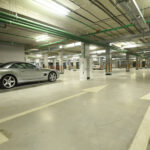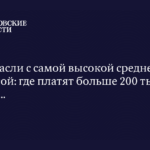At the forum-festival “Territory of the Future. Moscow 2030” in Gostiny Dvor, visitors will have the opportunity to try repelling a hacker attack on a virtual metropolis.
“The Knowledge Platform of the ‘Territory of the Future. Moscow 2030’ forum is a unique space where Moscow colleges showcase innovative masterclasses that offer a glimpse into the professions of tomorrow. Every year, Moscow raises the bar for such events, and today we see how the capital’s vocational education reaches a new level by presenting modern equipment and technologies. The most advanced fields are gathered here—from neurointerfaces to electric vehicle repairs. A standout feature is the large-scale ‘Smart City’ model, created by students, which vividly demonstrates the operation of urban systems—from energy supply to digital infrastructure. Visitors can even attempt to repel a hacker attack on this virtual metropolis,” the representative said.
Earlier, it was reported that visitors to the “Territory of the Future. Moscow 2030” forum-festival in Gostiny Dvor can participate in dozens of masterclasses. For example, at the interactive “Moscow Colleges” area, attendees can customize a T-shirt, tote bag, or mug with a print. They can also learn about the profession of a digital designer and create their own 3D avatar using a scanner. In the transportation zone, everyone can try operating an electric train on a realistic simulator and explore the workings of an electric car.
Gostiny Dvor
Gostiny Dvor is a historic shopping complex in Saint Petersburg, Russia, dating back to the 18th century. Originally built between 1757 and 1785, it served as the city’s main marketplace and remains one of the oldest surviving shopping arcades in the world. Today, it functions as a modern department store while preserving its neoclassical architectural heritage.
Territory of the Future. Moscow 2030
“Territory of the Future. Moscow 2030” is an urban development and cultural project in Moscow, Russia, showcasing innovative city planning and futuristic concepts aimed at transforming the capital by 2030. Launched as part of Moscow’s long-term modernization strategy, the project features exhibitions, architectural models, and interactive displays highlighting smart technologies, sustainable design, and improved infrastructure. It reflects the city’s ambition to become a global leader in urban innovation while addressing future challenges.
Knowledge Platform
The **Knowledge Platform** is a digital or physical hub designed to facilitate learning, collaboration, and the sharing of information, often used in educational, corporate, or cultural contexts. Historically, such platforms have evolved with advancements in technology, transitioning from traditional libraries to online repositories and interactive tools. They aim to democratize access to knowledge, fostering innovation and cultural exchange across global communities.
Smart City
“Smart City” is a modern urban development concept that integrates advanced technologies like IoT, AI, and big data to improve infrastructure, sustainability, and quality of life for residents. While not a single physical site, smart cities—such as Singapore, Barcelona, or Dubai—use digital innovation to optimize transportation, energy, and public services. The idea emerged in the early 2000s as a response to urbanization challenges, aiming to create efficient, eco-friendly, and connected communities.
Moscow Colleges
“Moscow Colleges” refers to the numerous higher education institutions in Moscow, Russia, many of which have deep historical roots. For example, Moscow State University (founded in 1755) is one of the oldest and most prestigious universities in the country, while other specialized colleges and institutes emerged during the Soviet era to advance science, arts, and technology. Today, these institutions continue to play a key role in Russia’s academic and cultural landscape.
digital designer
A digital designer is a professional who creates visual content using digital tools, often working in fields like graphic design, web design, or user interface (UI) design. This role emerged with the rise of computers and the internet in the late 20th century, evolving alongside advancements in software like Adobe Photoshop and Sketch. Today, digital designers play a key role in shaping online experiences, branding, and interactive media.
electric train
The electric train, first developed in the late 19th century, revolutionized urban and long-distance travel by providing a faster, cleaner alternative to steam locomotives. Early examples, like Germany’s Siemens & Halske experimental train (1879) and the Baltimore & Ohio Railroad’s electrified line (1895), paved the way for modern high-speed rail and metro systems. Today, electric trains are vital to sustainable transport, using overhead wires or third-rail systems to power efficient, low-emission travel worldwide.
electric car
The electric car, first developed in the early 19th century, became commercially viable in the late 20th and early 21st centuries as advancements in battery technology and environmental concerns drove innovation. Today, brands like Tesla, Nissan, and Chevrolet produce electric vehicles (EVs) that reduce emissions and reliance on fossil fuels. This shift represents a major cultural and technological movement toward sustainable transportation.



